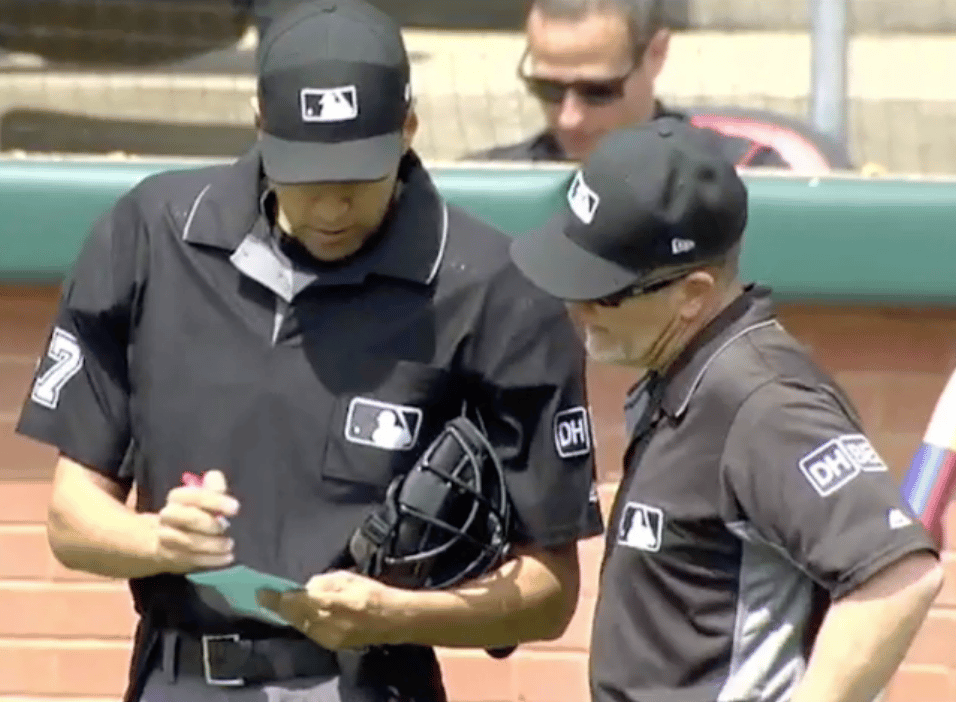2020 NFHS POINTS OF EMPHASIS AND HOW TO FOLLOW THEM
THIS RULE APPLIES TO NFHS
NFHS POINTS OF EMPHASIS AND HOW TO FOLLOW THEM
By Brady Hood
Each year NHFS compiles a list of rules for coaches and officials to emphasize during the course of the baseball season. This year there are six rules that will require extra attention.
Ending a regulation game
The first is game ending procedures. Under NFHS rule 4-2 there are several ways to end a regulation game. It will be important to follow these procedures to mitigate risk. If the home team is ahead by 10 runs or more after 4 ½ innings, or the away team is 10 or more runs ahead after 5 innings, then the game is over. The game can not continue regardless of whether the coaches agree to keep playing or not. A game should also not be extended beyond proper daylight for the sake of trying to finish an inning. This creates an undue risk to players, coaches, and spectators.

The second point of emphasis is the new DH rule (NFHS 3-1-4). The new rule states, “Designated Hitter (DH) can be used in two ways. The DH can be listed as the tenth starter replacing one of the other nine players when it is their turn to bat. The other method is that any one of the starting defensive players can be their own DH (in effect having two positions) within the confines of the rule requirements.”
This new rule will allow coaches more flexibility to best utilize all the players on their rosters. This will be especially helpful in situations where pitch count becomes an issue. For instance, under the old rule, if a pitcher was to come out of the game he would need to switch to another defensive position in order to stay in the line-up. Under the new rule, the pitcher (or any defensive player) can be taken out while still maintaining his batting position. A coach must still declare a DH at the start of the game or they forfeit the use of a DH. Umpires will still need to verify the substitute in the lineup and whether the coach wants to kill the DH at that time.
Pitching mechanics
Proper pitching position is the third point of emphasis. While college and the pros may allow the “hybrid” stance, high school does not. It will be important that pitchers are being taught proper feet placement for the wind-up and set positions as umpires will be watching this more closely for the 2020 season. In the wind-up the pitchers non-pivot foot must be in a position that is on or behind the front edge of the pitching plate (NFHS 6-1-2). With his feet in the wind-up position, the pitcher may only deliver a pitch or step backward off the pitcher’s plate with his pivot foot first. Here is a video explaining how: https://youtu.be/OOcRmjVY6Ck
From the set position a pitcher must stand with his entire non-pivot foot in front of a line extending through the front edge of the pitcher’s plate and with his pivot foot in contact with or directly in front of and parallel to the pitcher’s plate (NFHS 6-1-3). Here is a video explaining feet placement in the set position: https://youtu.be/TKZ5uao-XwY
Sliding on a force play
The Fourth point of emphasis is the force play slide rule. NFHS 2-32 describes a slide as illegal if, “the runner, on a force play, does not slide on the ground and in a direct line between the two bases.” If, in the judgement of the umpire, the retired runner interferes in any way and prevents a double play, the runner is out and the other runner who the play was being made on is also out (NFHS 8-4-2g). Here is a big league example: https://youtu.be/U8kQRd6ZxdI
Player safety
The final two points of emphasis are regarding player safety. Unlike what you may see at any Major League game, Jewelry is not permissible to be worn except for religious or medical reasons. A player wearing such jewelry must have it tucked inside of their jersey and it can not be showing. If the jewelry is illegal, the player and coach will be given a verbal warning and the next player to commit the offense will be ejected.
This is the first year that all baseballs and chest and body protectors used in high school baseball competition shall meet the NOCSAE (National Operating Committee on Standards for Athletic Equipment) standard at the time of manufacture. So coaches and equipment managers need to make sure that their equipment meets these player safety guidelines or they will not be able to participate.

